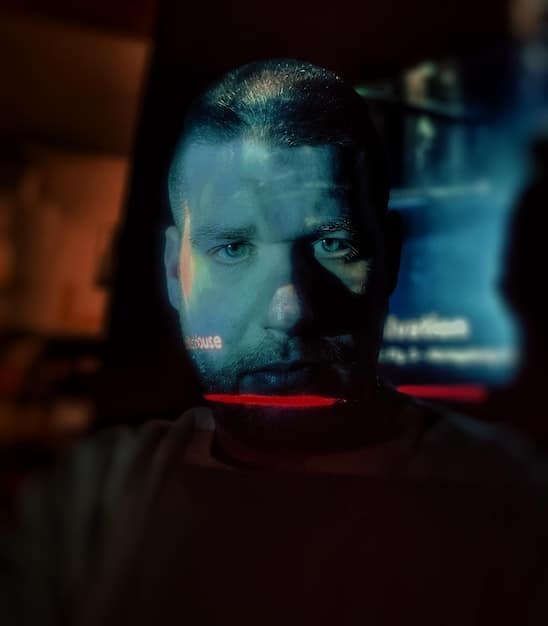The Rise of True Crime: Analyzing Its Thrilling Popularity in Series

The growing global fascination with true crime series can be attributed to a complex interplay of psychological engagement, the human desire for understanding dark events, and the evolving sophistication of documentary storytelling, captivating audiences worldwide.
The allure of the macabre has captivated humanity for centuries, but never before has it been so widely accessible, so meticulously documented, and so voraciously consumed as in the current era of digital streaming. The Rise of True Crime: Analyzing the Popularity of True Crime Series explores this captivating phenomenon, delving into the psychological, social, and technological factors that have turned real-life tragedies into a cultural touchstone. Why do we find ourselves drawn to narratives of serial killers, unsolved mysteries, and intricate investigations? This deep dive aims to unravel the multifaceted appeal of a genre that continues to dominate our screens and conversations.
The Irresistible Pull: Why True Crime Holds Us Captive
The surge in popularity of true crime series is not merely a fleeting trend but a significant cultural shift. Audiences are increasingly drawn to these narratives, finding a unique blend of intrigue, horror, and a strange sense of catharsis within the real-life accounts of crime and justice. It speaks to a fundamental human curiosity about the darker aspects of our world, offering a safe space to explore the unsettling without direct personal risk.
One primary factor contributing to this widespread appeal is the inherent human desire to understand the “why.” When faced with unthinkable acts, our minds instinctively seek patterns, motives, and explanations. True crime series often provide a structured, narrative framework through which viewers can attempt to make sense of the seemingly senseless. This intellectual engagement turns passive viewing into an active psychological exercise.
The Psychological Hooks
Several psychological mechanisms are at play in our attraction to true crime. It’s not just about morbid curiosity; it’s about a deeper exploration of human nature.
- Morbid Curiosity: A natural fascination with dangerous or forbidden subjects, allowing us to safely explore taboos.
- Sense of Control: By understanding the modus operandi of criminals, viewers might feel better equipped to avoid similar dangers.
- Empathy and Justice: Many viewers feel a strong sense of empathy for victims and a desire to see justice served, even if only within the confines of a documentary.
- Problem-Solving: True crime often presents puzzles to be solved, much like a detective story, engaging the viewer’s analytical skills.
Moreover, these series often tap into our primal fears while paradoxically offering a sense of security. Watching a crime unfold from the comfort of one’s home provides a contained environment to confront anxieties about personal safety and the fragility of life. The narratives often conclude with justice, providing a psychological closure that real life doesn’t always offer.
The storytelling techniques employed by true crime series have also evolved significantly. Gone are the days of simple reenactments; modern true crime leverages investigative journalism, expert interviews, and archival footage to create compelling, layered narratives that often feel as intricate as fictional thrillers, but with the added weight of being undeniably real.
From Podcasts to Prestige TV: The Evolution of True Crime Storytelling
The current golden age of true crime series didn’t emerge in a vacuum. Its roots can be traced back to earlier forms of media, evolving significantly in sophistication and reach, particularly with the advent of digital platforms. What began as sensationalized newspaper headlines and campfire stories has transformed into a genre capable of winning prestigious awards and influencing public discourse.
Initially, true crime found a home in radio programs and pulp magazines, then later in televised specials and docudramas. These early iterations, while popular, often prioritized shock value over nuanced investigation. The focus was predominantly on the “what” and “who,” with less emphasis on the broader societal implications or the victims’ stories beyond the sensational.
Pivotal Moments in the Genre’s Development
Several milestones paved the way for the contemporary true crime boom. The transition from episodic television to binge-worthy streaming content was particularly impactful.
- “The Jinx” (2015): This HBO documentary series about Robert Durst set a new standard for investigative true crime, blending cinematic storytelling with real-time developments, including a shocking on-air admission.
- “Making a Murderer” (2015): Netflix’s deep dive into the Steven Avery case ignited global conversations about the American justice system, showcasing the power of streaming to create a collective, international viewing experience.
- “Serial” (2014): While a podcast, “Serial” proved the immense appetite for long-form, thoroughly researched true crime narratives, demonstrating that compelling storytelling, even without visual aids, could captivate millions.
These productions, among others, demonstrated a shift towards more journalistic rigor, extensive research, and a commitment to exploring systemic failures rather than just individual criminality. They also highlighted ethical considerations, prompting discussions about victim re-traumatization, the responsibilities of documentarians, and the potential impact on ongoing legal processes.
The format itself has become increasingly diverse. From docu-series stretching over multiple episodes, allowing for intricate plot development and character studies, to experimental formats like “unsolved mysteries” that actively invite viewer participation, the genre continues to innovate. This adaptability and willingness to push narrative boundaries have made true crime one of the most dynamic and rapidly evolving genres in entertainment.

The Appeal to Justice and Morality: Beyond Mere Curiosity
While curiosity undeniably plays a role, the enduring popularity of true crime series extends far beyond a simple morbid fascination. Many viewers are drawn to these narratives due to a profound engagement with themes of justice, morality, and the societal implications of criminal acts. It becomes a space for reflection on right and wrong, on the strengths and weaknesses of legal systems, and on the resilience of the human spirit in the face of tragedy.
The pursuit of justice is a universal human desire. When legal systems fail, or when justice is delayed or denied, true crime series can serve as a powerful platform for advocacy. They often shed light on cold cases, wrongful convictions, and systemic inefficiencies, acting as a catalyst for renewed public interest and, in some instances, even contributing to real-world outcomes, such as the reopening of investigations or the exoneration of the innocent.
Ethical Considerations and Social Impact
The genre is not without its ethical quandaries, but these very discussions highlight its profound social impact. How do creators balance the need for compelling storytelling with the respect for victims and their families? How do they avoid glorifying perpetrators or re-traumatizing those affected by crime?
- Victim Advocacy: Many series prioritize giving a voice to victims and their families, ensuring their stories are told with dignity and respect.
- Systemic Critique: True crime often serves as a mirror, reflecting flaws in police procedure, judicial processes, and social structures.
- Public Awareness: By shedding light on specific types of crime (e.g., domestic violence, sexual assault), these series can raise awareness and contribute to prevention efforts.
- Education: Viewers gain insights into forensic science, criminal psychology, and the complexities of legal investigations.
The narratives often explore the societal consequences of crime, moving beyond individual acts to examine how communities are affected, how institutions respond, and how justice, or its absence, shapes lives. This level of engagement transforms true crime from mere entertainment into a form of public education and civic discourse, prompting viewers to consider their own roles in a just society.
Moreover, the exploration of morality is central. True crime forces us to confront uncomfortable questions about human nature, the capacity for evil, and the nuances of culpability. It often presents complex characters and ambiguous situations, challenging simplistic notions of good versus evil and encouraging a more sophisticated understanding of the factors that lead to criminal behavior.
The Role of Technology and Accessibility in True Crime’s Ascent
The unprecedented growth of true crime series is inextricably linked to technological advancements and the increasing accessibility of diverse content. Streaming platforms have acted as a powerful accelerant, fundamentally changing how we consume media and, in turn, how true crime narratives are produced and distributed. This symbiotic relationship has propelled the genre into mainstream consciousness, making it a ubiquitous presence in our digital lives.
Before the streaming era, viewers were beholden to network schedules and limited library access. The advent of platforms like Netflix, Hulu, and HBO Max revolutionized this by offering vast catalogs of content on demand. This “binge-watching” culture perfectly suits the serialized nature of many true crime documentaries, allowing viewers to immerse themselves completely in a complex case over a single weekend.
Digital Platforms as Catalysts
The proliferation of streaming services has not only made content more accessible but has also fostered innovation in true crime production.
- Global Reach: Stories once limited by local broadcasts can now reach international audiences, sparking global conversations and interest.
- Production Budgets: Increased competition among platforms has led to higher production values, allowing for more in-depth investigations, sophisticated storytelling, and cinematic quality.
- Niche Content: Streaming allows for the exploration of more obscure or nuanced cases that might not appeal to a broad, traditional television audience, catering to specialized interests within the genre.
- Interactive Elements: Some platforms experiment with interactive components, further immersing viewers in the investigative process.
Beyond streaming, the rise of podcasts has also played a crucial role. Podcasts offer an intimate, audio-only experience, allowing for detailed, long-form journalistic narratives that delve deeply into cases without visual distractions. “Serial” is a prime example of how audio format can build immense suspense and engagement, proving that high-quality storytelling transcends screen dependency.
Social media platforms further amplify the reach and impact of true crime, transforming individual viewing experiences into communal events. Online communities dissect theories, share information, and debate outcomes. This collective engagement contributes significantly to the genre’s viral spread and sustained popularity, turning series into watercooler discussions even without physical watercoolers.
Beyond the Headlines: The Craft of True Crime Filmmaking
The appeal of true crime is not solely in the lurid details of a case but significantly in the masterful craft of its filmmaking. Modern true crime series are far removed from the sensationalist tabloids or basic reenactments of the past. They represent a sophisticated form of documentary storytelling, often employing techniques more commonly associated with high-budget narrative cinema. This commitment to cinematic quality elevates the genre, making it not just informative but genuinely compelling.
At the heart of compelling true crime is diligent research. Filmmakers often spend years compiling evidence, conducting interviews, and sifting through archival materials. This meticulous approach ensures accuracy and builds a foundation of credibility that is essential for a genre dealing with real lives and real tragedies. The visual and auditory elements are carefully curated to enhance the narrative without sensationalizing the tragedy itself.
Elements of Superior Production
The technical and artistic choices in true crime filmmaking are critical to its impact and the ability to maintain audience engagement over multiple episodes.
- Investigative Journalism: Deep dives into police reports, court documents, and witness testimonies form the backbone of credible true crime.
- Complex Narratives: Unlike simple retellings, many series weave intricate plots, present multiple perspectives, and introduce twists and turns that keep viewers guessing.
- Character Development: Even with real people, filmmakers craft compelling “characters” – victims, perpetrators, investigators – revealing their motivations, struggles, and humanity.
- Cinematic Techniques: Use of dramatic lighting, evocative musical scores, sophisticated editing, and compelling re-enactments (when used thoughtfully) to build tension and atmosphere.
The choice of perspective is also crucial. Some series focus exclusively on the victim’s journey, others on the police investigation, and still others attempt to understand the psychology of the perpetrator. This narrative framing profoundly shapes the viewer’s experience and interpretation of the events, demonstrating the nuanced approach filmmakers take to presenting complex realities.
Furthermore, the use of expert interviews – from forensic scientists and psychologists to legal experts and former detectives – adds layers of authority and insight. These contributions not only explain complex procedures but also provide expert opinions that help contextualize the events, offering a deeper understanding of the human behavior and societal factors at play.
True Crime and the Human Psyche: Safety in the Macabre
Exploring the human psyche’s fascination with true crime reveals a complex tapestry of motivations that extend beyond simple curiosity. It often boils down to a paradoxical search for safety and understanding within the realm of the macabre. By engaging with these dark narratives, individuals can, from a safe distance, process their own anxieties about vulnerability, evil, and the chaotic nature of the world.
For many, true crime offers a form of “fear inoculation.” By observing the patterns and methodologies of criminals, viewers might subconsciously feel better prepared to identify and avoid dangerous situations in their own lives. It’s a way of rehearsing worst-case scenarios without actually facing them, providing a faux sense of control over the unpredictable elements of existence.
Coping Mechanisms and Catharsis
The engagement with true crime can also serve as a coping mechanism, allowing viewers to experience emotions in a controlled environment.
- Emotional Release: Viewers can experience fear, anger, sadness, and relief without direct personal consequence, providing a cathartic outlet.
- Sense of Justice: Witnessing justice being served, even in a historical case, can provide a satisfying sense of closure and affirmation of moral order.
- Understanding Evil: Confronting the darkest aspects of human behavior can help some individuals process their own understanding of evil and suffering.
- Community and Discussion: Sharing theories and reactions with others can create a sense of community and validate emotional responses.
Moreover, true crime can tap into a fundamental human need for narratives of survival and resilience. While the focus is often on the crime itself, many series also highlight the strength of victims, their families, and the investigators who tirelessly seek answers. This emphasis on the triumph of good over evil, or at least the pursuit of it, offers a beacon of hope even amidst the darkness.
The genre also appeals to our innate problem-solving inclination. Like a complex puzzle, true crime cases often present myriad clues, conflicting testimonies, and ambiguous motives. Viewers are invited to piece together the narrative alongside the detectives, intellectually engaging with the process of deduction and inference. This active participation elevates the viewing experience beyond passive consumption, making it a mentally stimulating endeavor.
The Future of True Crime: Evolution and Ethical Responsibilities
As true crime continues its reign as a dominant genre, its future promises further evolution, accompanied by increasingly critical discussions around its ethical responsibilities. The saturation of the market means that future productions will need to innovate even more profoundly, moving beyond simple shock value towards ever more nuanced, responsible, and compelling storytelling. The genre is not static; it must adapt to maintain its grip on audiences while navigating an evolving moral landscape.
One key area of evolution will undoubtedly be in the narrative approaches. We are likely to see more series that broaden their scope, perhaps focusing less on the singular act of violence and more on the systemic issues that contribute to crime—poverty, mental health, societal inequalities, and institutional biases. The victim’s voice will become even more central, ensuring that their stories are told with maximum sensitivity and agency, rather than merely serving as plot devices.
Navigating the Path Forward
The path ahead for true crime involves balancing compelling narratives with heightened ethical awareness and innovation.
- Increased Focus on Restorative Justice: Shifting emphasis from punishment to healing and reconciliation for victims and communities.
- Diverse Perspectives: Telling true crime stories from previously marginalized viewpoints, including those of overlooked victims or communities.
- Technological Integration: Utilizing cutting-edge forensic science and digital tools not just for investigation, but also for storytelling, potentially allowing for more immersive and accurate portrayals.
- Enhanced Ethical Guidelines: Establishing and adhering to stricter industry standards regarding victim privacy, perpetrator glorification, and the impact on living individuals.
The discussion around “true crime tourism” and the commodification of tragedy will also intensify, pushing creators and consumers alike to consider the tangible impact of these narratives on the locations and communities involved. Responsible storytelling will entail a greater engagement with the aftermath of crime, including the efforts towards healing and prevention.
Furthermore, global true crime will likely proliferate. While there has been a strong Western bias in many popular series, the future will see more international crime stories gaining prominence, offering diverse cultural perspectives on crime and justice. This globalization of the genre will enrich its narrative palette and foster a broader understanding of the human condition across different societies.
Ultimately, the future of true crime lies in its ability to mature without losing its inherent fascination. It must continue to satisfy our thirst for understanding the dark elements of our world while doing so with integrity, empathy, and a commitment to positive social change. The genre’s staying power will depend on its capacity to evolve from simple storytelling into a powerful tool for social commentary and human understanding.

| Key Attribute | Brief Description |
|---|---|
| 🔍 Psychological Engagement | Appeals to human curiosity about darker aspects, offering a safe space to explore fear and understanding. |
| 📺 Media Evolution | From radio shows to prestige streaming series, the genre matured with higher production values and journalistic depth. |
| ⚖️ Justice & Morality | Connects viewers to universal desires for justice, often exposing systemic flaws and giving voice to victims. |
| 🔮 Future Outlook | Emphasizes ethical responsibilities and focuses on restorative justice, global perspectives, and broader societal issues. |
Frequently Asked Questions About True Crime Series
▼
The appeal of true crime is multifaceted. It satisfies a natural human curiosity about the darker side of life, offers a safe way to explore fear, and provides psychological engagement as viewers try to understand motivations and outcomes. It also taps into a desire for justice and a quest to make sense of senseless acts, offering a unique blend of intrigue and emotional processing.
▼
Technology, particularly streaming platforms, has been a major catalyst. It has made true crime content vastly more accessible, enabling binge-watching and reaching a global audience. Increased production budgets due to platform competition have also led to higher quality, more in-depth investigative series, while social media facilitates community discussion and widespread awareness.
▼
Ethical concerns in true crime are significant. Key issues include avoiding the re-traumatization of victims and their families, preventing the glorification of perpetrators, ensuring accuracy and responsible reporting, and managing the potential impact on ongoing legal cases. Filmmakers increasingly strive for a balance between compelling storytelling and profound respect for all involved.
▼
For some, true crime can offer psychological benefits. It can provide a sense of control by helping viewers understand potential dangers, offer catharsis through emotional release in a safe environment, and satisfy an innate problem-solving instinct. It also allows individuals to process anxieties about personal safety and the unpredictability of human behavior without direct risk.
▼
The future of true crime is likely to see a greater focus on systemic issues behind crimes, such as socio-economic factors and mental health. There will be an increased emphasis on victim’s voices and restorative justice. We can also anticipate more diverse, global true crime narratives, and a continuous push for higher ethical standards and innovative storytelling techniques to keep audiences engaged responsibly.
Conclusion
The pervasive presence of true crime series in contemporary culture transcends simple entertainment. It is a nuanced reflection of collective human anxieties, our profound desire for justice, and an insatiable intellectual curiosity about the darker facets of existence. The evolution of storytelling, empowered by accessible technology and refined journalistic integrity, has transformed these narratives into powerful vehicles for introspection and social commentary. As the genre continues to mature, its enduring popularity will undoubtedly hinge on its capacity to balance gripping narratives with unwavering ethical responsibility, fostering a deeper understanding of human behavior and societal structures.





